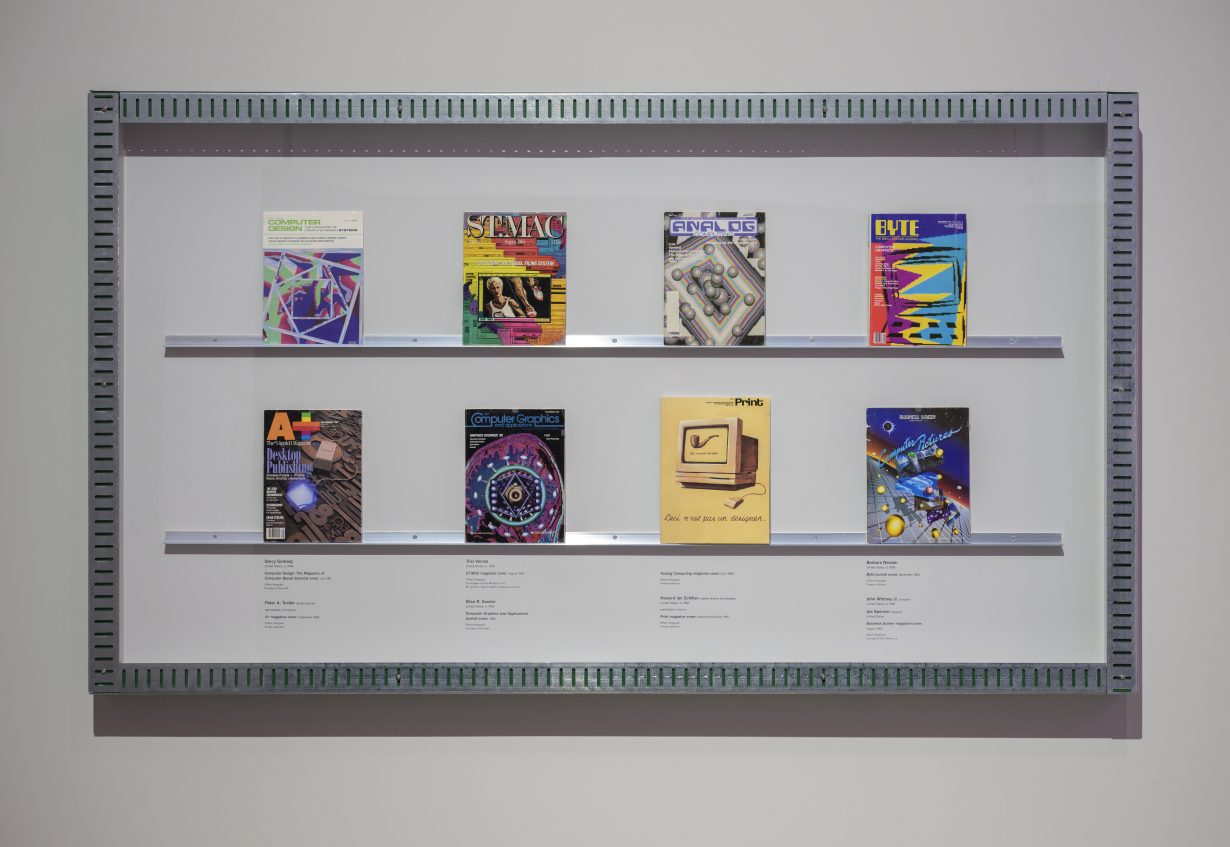A new show at LACMA explores the impact of digital manipulation on the past 40 years of popular culture – and the rise of an influential counterculture
Since the film industry drives Los Angeles, one might expect this show – of over 150 pieces of art, design, commercial film and software demonstrating the impact that digital manipulation tools have had on culture over the past 40 years – to force-feed its audience a sizzle-reel of CGI’s greatest hits. While digitally enhanced commercial film does feature in Digital Witness, in the form of looped clips on hanging screens threaded through the exhibition, its inclusion doesn’t seem to pander to the main sponsor (Adobe), the audience or a LACMA board member in ‘the industry’. Nevertheless, the logic behind what did make the cut here is often unclear. Why, for example, is a clip of Life of Pi’s wonky animated tiger (2012) on loop and not one from the more technically significant Avatar (2009) or 1995’s groundbreaking Toy Story?
The show’s subject poses considerable challenges: not only are moving images notorious stumbling blocks for exhibition design – generally necessitating lots of curtains and floating walls – but the technology itself is both uniquely specialised and so rapidly evolving that decades-apart experts speak, quite literally, different languages. The museum has valiantly attempted to address the former. Wall-mounted flatscreens display video art, pedestals dignify 40-year-old desktops and Casey Kauffmann’s It’s Over Bitch (2022), an installation comprising a pyramid of stacked televisions, holds court in a corner of the gallery; no works are siloed behind black drop-cloths.

Although there are few didactics to explain what we’re seeing, luckily many works speak for themselves, among them a framed, gridded compilation of Pen & Pixel’s 1990s rap and hip-hop album covers. While the Houston-based graphic firm has closed, its irreverent mashup clip-art style involving drop shadows, drastically foreshortened limbs, distortions of image and text, and cut-and-pasted iconography – image manipulations ubiquitous enough to have their own shortcuts in Adobe Photoshop – remains synonymous with the aesthetic of gangsta rap. On the cover of Str-8 Doin Tha Fool (1997), the rapper 2-Def offers champagne to a miniature woman in a diorama-size bedroom; on the cover of 400 Degreez (1998), the rapper Juvenile rains fire onto a blazing city. By revealing the parodic impulses in rap, Pen & Pixel’s album art made a mockery of the threat conservative pundits of the day ascribed to the musical genre.

Judging by the range of desktop models on pedestals, the field itself was significantly wider in the 1980s than today’s Apple-dominated market. While Apple’s 1984 Macintosh, which marketed its MacPaint and MacWrite software to ‘nontechnical’ consumers, opened the door for digital artists and designers, it initially faced competition from the Commodore Amiga. Among Amiga users were piraters belonging to an anticapitalist subculture dubbed the demo-scene, whose values ran counter to software companies’ vision of commercial dominance. What began as an illegal distribution ring for Amiga 500 gaming software evolved during the early 1990s into a network for sharing coders’ own work in computer graphics, often accompanied by original house and techno compositions. At LACMA, this code-cracker community’s freeware animations, featuring bouncing spheres, dancing silhouettes and other rudimentary shapes, loop on an Amiga 500. While Pen & Pixel’s subversion derived from their ironic clip-art style, demoscene coders were typically self-serious, their animations intended to show off their prowess at manipulating extant software, their subversion at the level of distribution rather than design. Yet whether it’s the aesthetic of early-1990s rave and warehouse party culture or mid/late-90s hip hop, the look of ‘the digital’ is instantly legible, proving how far and wide these innovations have travelled.
Digital Witness: Revolutions in Design, Photography, and Film at LACMA, Los Angeles, through 13 July
From the January & February 2025 issue of ArtReview – get your copy.
